Students
Students are active members of ASLE and they contribute to the association in many ways. There are numerous benefits for our student members:
- The association welcomes the participation of undergraduate students, many of whom are learning and conducting research under the guidance of ASLE members.
- Our Mentoring Program supports graduate students by matching students with faculty mentors
- At our biennial conference, graduate students present on panels and in roundtable discussions, participate in workshops, and attend sessions on professionalization designed specifically for our student members.
- Graduate Student Liaisons serve as elected and voting members of the ASLE Executive Council
We invite you to join ASLE today and enjoy the many student benefits of membership.
Undergraduate Students
ASLE welcomes the participation of undergraduate students, many of whom are learning and conducting research under the guidance of ASLE members. In fact many ASLE members are on the faculty of department in the humanities and sciences in colleges that focus exclusively on undergraduate education.
Graduate Students
Graduate students have always been at the center of ASLE. Graduate students have joined experienced teachers and scholars in building ASLE, compiling reading lists, syllabi and a “Where to Study” list of institutions with graduate programs in the environmental humanities.
Why Pursue Graduate Study in the Environmental Humanities?
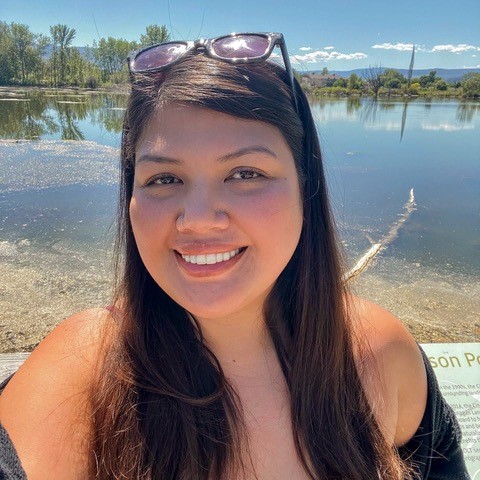
Rina Garcia Chua, Simon Fraser University
I first became interested in ecocriticism almost a decade ago. At that time, I was in my native Philippines and there was a not a lot of resources or support for the kind of research I wanted to do. ASLE’s international membership grant has allowed me to reach out to and connect with Global South and North American scholars. This made me feel less alone in my pursuit. When I moved to Canada for my PhD degree, ASLE has become central to my experience as a graduate student. Attending the ASLE biennial conference in Detroit was one of the best experiences I had as a young scholar. I remember thinking back then that I have found my community!
The environmental humanities is an incredible field to be a part of as a graduate student. Not only are the scholars, academics, and creatives such generous and warm people, but it is also a burgeoning field that is radical, outward-looking, and innovative. I can say with confidence that this field engages with interdisciplinary modes of practice and is constantly open to criticism and new methods. I also appreciate how supportive the community is with one another! Furthermore, ASLE has ASLE-affiliates all over the world that can offer their own unique supports and mentoring while still providing the same benefits of being an ASLE member. I’m involved with ALECC (in Canada) and ASLE-ASEAN (in Southeast Asia), and that has been helpful in my growth as a scholar, too.
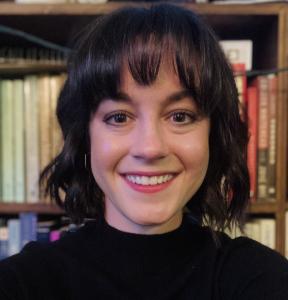
Cassie Galantine, University of Oregon
In a world continuously threatened by climate change, pandemic, and social injustices, engaging the environmental humanities has never been more important. One of the environmental humanities’ most critical contributions to academia and our ways of thinking more broadly is its focus on the value of personal experience as a valid source of knowledge. Studying the environmental humanities forces us to ask ourselves how do we know what we know? What counts as scientific knowledge? Who gets to decide what counts as knowledge? Whether we are studying creative nonfiction, public policy, political essays, novels, or other genres of information, applying an environmental humanities lens can reveal a rich network of different forms of evidence rooted in others’—and sometimes our own—experience of the world. Asserting personal experience, whether it be from a real individual or a fictional character, as one of many valid forms of knowledge is one way we as scholars, activists, and humans can address the gaps in whose ways of knowing “count” within Western institutions of learning.
The environmental humanities, if engaged ethically, allows us to analyze a diversity of voices that combine many different forms of evidence: quantitative data, ethnographic research, personal narratives, etc. As a field of study, it encourages us to question the parameters of why certain forms of information are considered “subjective” and others “objective” even though all forms of knowledge are filtered through human-crafted processes of inquiry or research questions. Studying the writing and activism of various queer, disabled, women of color, and Indigenous authors such as Eli Clare, Leanne Betasamosake Simpson, Winona LaDuke, Claudia Jones, and many others allows us to challenge popular Western academic assumptions that personal experience is not a valid or valuable source of evidence. Such assumptions have undermined the critical contributions of many women, people of color, and members of the LGBTQ+ community whose art and scholarship are often grounded in a body politics of knowledge.
For example, being an environmental humanities scholar has opened my eyes to the vital work of Critical Environmental Justice Studies (CEJS) scholars. CEJS it is an excellent lens through which tap into a body-politics of knowledge—to borrow Walter Mignolo and Madina V. Tlostanova’s term—as well as utilize multi-disciplinary methodologies in the fight against structural injustice. Critical Environmental Justice studies and, more broadly, the environmental humanities, are fields of study that would not exist without individuals, particularly Black and Indigenous grassroots activists, asserting lived experience as evidence and resisting colonial constructs of what counts as knowledge. Centering lived experiences also gives us the opportunity to resist the confines of Western colonial constructs of “objective truth” that so often silence people of color, people with disabilities, women, the LGBTQ+ community, first-generation students, and other historically marginalized individuals. Most importantly, environmental humanities work has always been done—largely through Indigenous land stewardship and ways of living in community. This long history can continue to provide us insight into a more equitable future that resists the structural damage of colonialism and racial capitalism.
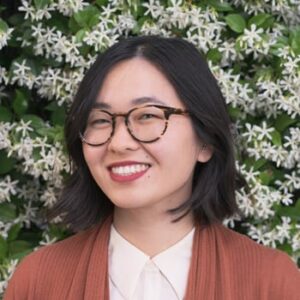
Heidi Amin-Hong, University of California, Santa Barbara
Joining ASLE and attending the 2016 conference in Detroit was a transformative experience for me. As a graduate student, I found the ASLE community to be a supportive and energizing space that nurtured my early work on Asian American narrative and the environment. At the conference, I met Jeffrey Santa Ana, Rina Garcia Chua, and Xiaojing Zhou, who have been my friends, mentors, and long-time collaborators since the 2016 conference. Our edited collection, Empire and Environment: Ecological Ruination in the Transpacific, will be published by the University of Michigan Press in Fall 2022. ASLE not only connected us to each other, but also provided spaces for us to meet with contributors and dialogue through workshops and seminars on race and the environment at the conference in Davis. These intellectual spaces were incredibly helpful for my own dissertation research, and provided avenues for me to share my work. Beyond being a rich intellectual community, ASLE has helped me cultivate friendships with other scholars passionate about the environmental humanities and the power of stories in the fight against climate change and military occupation. Being a part of the environmental humanities helped me sharpen my research to consider how fiction, visual art, and other cultural narratives can be roadmaps to a better world and address urgent socio-political questions. ASLE, and the environmental humanities more broadly, is an ideal space for graduate students to explore urgent interdisciplinary research questions and connect with engaged scholars.
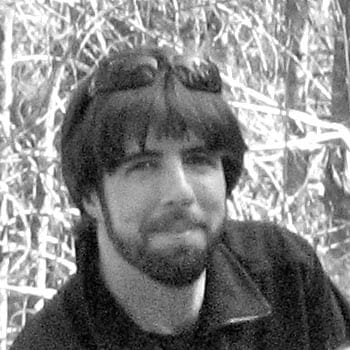
Stephen Siperstein, Choate Rosemary Hall
Because the climate is warming. Because the glaciers are melting and the seas are rising. Because the Earth has entered a sixth great mass extinction event and species everywhere are dying. Because social inequality is increasing every day. Because communities around the world are facing environmental racism and injustice on scales both large and small. Because environmental violence is fast and slow, affecting both ecosystems and bodies. Because people are losing their “sense of place” and because places are being taken from them through the forces of neoliberalism, consumerism, and the fossil fuel economy.
But since you are reading this, you likely already know most of this, and you are probably already considering the questions: “What can I do? What should I do to address this destruction and injustice?” One surprising answer might be: “study the environmental humanities.” The humanities, and the literary and cultural arts specifically, put us in contact with writers and thinkers and philosophers, with scientists and activists and teachers, all of whom have sought to understand the human role in the more than human world. Pursuing graduate study in the environmental humanities is an opportunity to learn from, and contribute to, the vast body of wisdom that has accumulated in this regard. Furthermore, while the roles of the humanities, and specifically the study of literary and cultural texts, in society has always been changing, it is nevertheless worth remembering that the word “text” comes from the Latin texere, meaning to weave or construct. Thus, the overall project of the environmental humanities, in its study of and creation of texts, may in one sense be seen as part of an effort to re-weave the world and to work towards constructing resilient communities in a time of great social and environmental crises.
Why should you pursue studying the environmental humanities? Because stories matter. Because poetry and metaphor matter. Because art, film, performance, and culture matter. And because the world needs more people who have studied these things, who can speak intelligently about these things, and who can write intelligently about these things. The world needs more people who can teach these things not just to students in institutions of higher education but also to the public at large. That is, the world needs public intellectuals, scholars, and artists who are engaged with issues of social and environmental justice and with issues of human and more-than-human histories and futures and who can tell powerful stories through many mediums.
Pursuing graduate study in the environmental humanities does not necessarily mean having to enter academia afterwards. There are many opportunities for the intellectual, artist, writer, or teacher trained in the environmental humanities in all areas of public and private work. However, it is important to recognize that the fields and sub-disciplines within the broad rubric of the environmental humanities do share a common orientation regarding the role of academia. They believe that no firm distinction exists between what occurs “inside” academia and what occurs “outside.” On the one hand, this means that being an academic need not take the place of participating in protest marches, joining environmental groups, or repairing community gardens and wilderness trails. On the other hand, it means that “traditional” academic study can also have a visible impact upon the world. Pursuing study in the environmental humanities means joining a community of scholars, teachers, artists, and activists who are working from both inside and outside academic institutions to address the many social and environmental crises that our common world is facing today. It means shifting the terms of the question from “What can I do” to “What can we do?”
Stephen Siperstein received his PhD in English at the University of Oregon and is currently on the faculty at Choate Rosemary Hall.
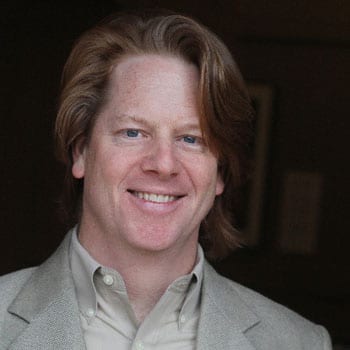
Paul Bogard, Hamline University
Soon after the whole rock n’ roll star thing didn’t work out, Paul Bogard began taking creative writing classes at the University of New Mexico (UNM), where he eventually earned a Masters of Arts in Creative Writing. During his three years at UNM Paul had the good fortune to work with Gregory Martin, a fantastic writer (Mountain City, Stories for Boys) and an even better teacher of creative nonfiction. Then at a conference in Albuquerque Paul met longtime ASLE member Susan Hanson who told him about the Literature and Environment program at the University of Nevada, Reno.
Paul can’t say enough good things about the four years he spent in Reno earning his PhD with the guidance of ASLE members Scott Slovic, Cheryll Glotfelty, Mike Branch, and alongside fellow students in the UNR program. The program at Reno was a great experience, a special place. Paul’s background in both literature and creative writing was a plus on the job market. In 2007 he accepted a three-year visiting position at Northland College in Ashland, Wisconsin, where he taught American literature surveys and advanced creative writing. He then spent two years at Wake Forest University teaching composition and creative writing.
 Now, with a tenure track position at Hamline University teaching creative nonfiction, and with the publication of his book The End of Night Paul’s primary motivation continues: to teach and write about “the environment,” this beautiful world we share. Being an ASLE member since 2003 has been a vital part of his path. Even if in his next life the rock n’ roll star thing does work out, Paul guesses he will still show up at ASLE conferences to hang out with his literature and environment friends.
Now, with a tenure track position at Hamline University teaching creative nonfiction, and with the publication of his book The End of Night Paul’s primary motivation continues: to teach and write about “the environment,” this beautiful world we share. Being an ASLE member since 2003 has been a vital part of his path. Even if in his next life the rock n’ roll star thing does work out, Paul guesses he will still show up at ASLE conferences to hang out with his literature and environment friends.
Paul Bogard is Associate Professor of English and Co-Program Director of Environmental Studies at Hamline University.
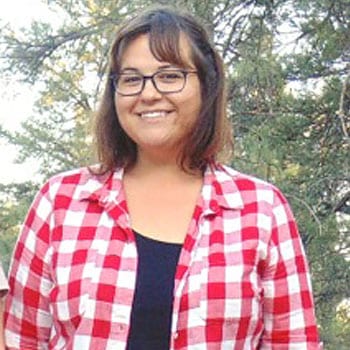
Erin Conley, University of California Los Angeles
Since joining ASLE in 2010 I’ve participated in two biennial conferences and held countless generative conversations both in-person and via social media with fellow scholars from around the world. No matter the context, our conversations always seem to circle back to the issue of how scholarship can engage our communities through praxis. What can we as scholars and teachers working in the environmental humanities do to curb the systemic inequality and structural violence that goes hand in hand with the destruction of the environment?
Every quarter I take my “Critical Reading and Writing” students to a busy intersection on the edge of UCLA’s campus and ask them to close read how humans move through the space. Here Sunset Boulevard cuts through a few acres of land dense with sycamores and ficus trees. North of the intersection, the Bel Air gates receive a slow trickle of luxury vehicles and landscaping trucks while countless busses and private cars pass by our university grounds on the south. I ask my students to describe the socio-ecological landscape of Los Angeles and to consider how their observations about it comport with the ways the literature of our city simultaneously critiques and celebrates this region replete with concrete and cars.
As graduate students we’re in a unique position to shape the field of environmental humanities through our research and pedagogical innovation. Experiment as much as you can with bringing ecological praxis into your classroom. Incorporate fieldwork and service learning. Have students read the world around them as a text. Whether the text they’re close reading is a poem or a major street intersection, our students can learn to describe power through the lens of environmental humanities, and in describing power they can start learning how to dismantle it.
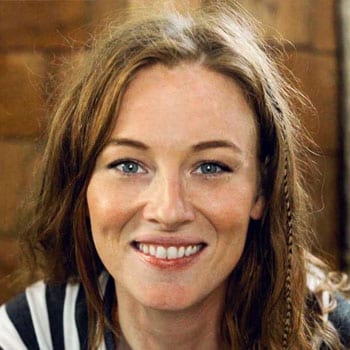
April Anson, San Diego State University
The conversations and contacts I make at ASLE enrich my knowledge of the field, my scholarship, and my personal life. – April Anson
I first attended and presented at the 2011 ASLE conference in Bloomington, Indiana. I was humbled and inspired to field questions from some of the foremost scholars in the field, and was energized as conversations in sessions continued over meals and conference excursions. In addition to the relaxed and engaged atmosphere of the conference, I took advantage of the mentoring program and received valuable guidance from Annie Ingram, a former president of ASLE. I gained much that first year and had a similarly exciting experience at the 2013 conference in Kansas. The conversations and contacts I make at ASLE enrich my knowledge of the field, my scholarship, and my personal life. Of all the scholarly organizations I am a part of, ASLE is the most encouraging to graduate students and the most welcoming to students with complex, interdisciplinary questions.
April Anson received her PhD from the University of Oregon, and is currently Assistant Professor in the the Department of Classics and Humanities specializing in Public Humanities at San Diego State University.
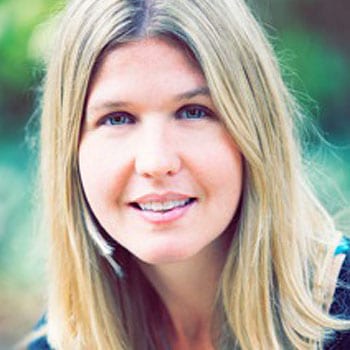
Dr. Ali Brox, University of Kansas
For the past two years, I have team taught a two-semester course, “The Global Environment,” in the Environmental Studies program at the University of Kansas. The course combines perspectives on the human relationship to the natural environment from the perspectives of the humanities, sciences, and social sciences.
Team-teaching has been an enriching experience. It has increased the scope of my research, and enhanced my ability to communicate with scholars in the natural and social sciences. Collaborative-teaching has benefited me as an instructor as well. The opportunity to observe teaching approaches from my colleagues in other fields, and their witnessing my classroom approach, has offered opportunities for discussions about how material is presented, the way class time is spent, and what the most effective methods are for achieving course goals. While teaching collaboratively is more fun than teaching solo, there are challenges when designing a course with others. It takes longer to make decisions and create course materials and to plan out the responsibilities among the team. And regular meetings to discuss course content, email exchanges of assignments and exams, and building rubrics to ensure that grading standards are consistent among evaluators.
The interdisciplinary nature of the course materials in “The Global Environment,” and the opportunities to work with professors in history, geography, and sociology has broadened my approach to course preparation and design, and has expanded the types of courses I am able teach in both English and Environmental Studies programs. Moreover, the relationships I have developed with my team-teaching colleagues have increased my feelings of belonging to the wider university community.
Ali Brox is a Lecturer in English and Environmental Studies at the University of Kansas.
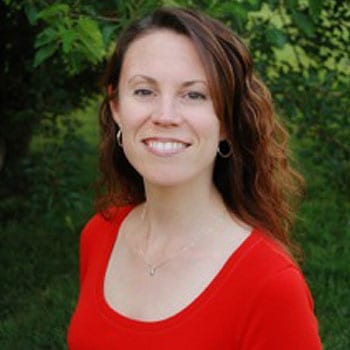
Dr. Ann Martinez, Kent State University at Stark
This past year I completed my dissertation, “The Medieval Green Age: Environmentalism and English Literature in the Middle Ages,” an examination of Anglo-Saxon and Middle English depictions of environmental awareness in poetry, and joined the ranks of the beleaguered academic job seekers. 2013-2014 was considered a “good” year for Medievalists on the market. I applied to thirty-four positions and was one of the fortunate ones who received attention from a number of schools, and in the end had two job offers. I feel that the focus of my research, particularly my dissertation, helped me immensely in getting that attention. The majority of the positions to which I applied were listed as “Pre-1800 British Literature.” But in the job interviews my expertise in ecocriticism and environmental literature was attractive to search committees. The interdisciplinary edge to my work allows me to contribute to green conversations and initiatives that many colleges have recently started.
My interest in ecocriticism began years ago, when I took a class at the University of Kansas with Byron Caminero-Santangelo. He encouraged me to join ASLE and attend the 2011 conference in Bloomington, Indiana, where I presented “Green Boundaries: Displacement and the Non-Human in British Literature, from Medieval Monsters to Tolkien’s Elves,” and the 2013 conference in Lawrence, Kansas, where I presented “Nanesmonnesland: No-man’s-land, Monstrous Boundaries, and the Figure of the Hybrid in Beowulf.” As I prepare to start my new job this fall as an assistant professor at Kent State University at Stark, I am very thankful that I took the green way.
Ann Martinez is currently an Assistant Professor of English at Kent State University at Stark.
